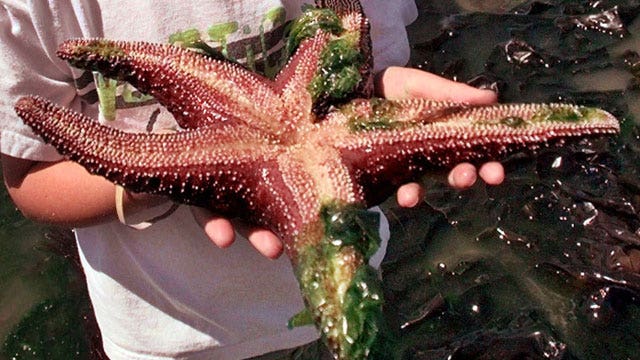Starfish limbs wrench themselves from their bodies when suffering from a mysterious new disease. Biologists don’t know what causes the affliction or how to stop it. And the loss of tens of thousands of starfish, also known as sea stars, threatens to unbalance the ecosystems of the North American coasts.
Last summer, scientists first observed the disease at Starfish Point on Washington’s Olympic Peninsula, reported KCTS’s EarthFix. The disease also decimated starfish populations in Vancouver Harbor and Howe Sound in Canada last summer, according to the Vancouver Aquarium. Now, the disease has been spotted in patches from southern California to Alaska and on the eastern coasts of the United States.
Biologists named the mysterious illness, “starfish-wasting syndrome,” but haven’t devised a way to stop it, nor have they even determined where the disease originated, reported KCTS.
When the disease hits, starfish may develop lesions on their skin. Then their arms writhe and contort until the appendages break away from the body. Normally, starfish can regenerate lost arms, but not after the disease strikes. Instead, the lost arms allow the starfish guts to leak out from their central body cavity, killing the marine predator.
First, the sunflower star, Pycnopodia helianthoides, fell to the disease, then the purple sea star, Pisaster ochraceus. Now, at least 12 species suffer from starfish wasting syndrome.
After hearing the reports from Canada, diver and videographer, Laura James filmed the syndrome’s devastation of starfish off the coast of Seattle, reported PBS. James started a website to help monitor the spread of the disease. When people notice signs of the disease, they can report their sightings via social media using #sickstarfish. The University of California also hosts a tracking and reporting website.
Monitoring and stopping the spread of the disease could help save the marine ecosystems of North America, because starfish prevent overpopulation of herbivores.
Starfish eat sea urchins, which if too numerous can devour much of the kelp forests of the western coast North America.





















